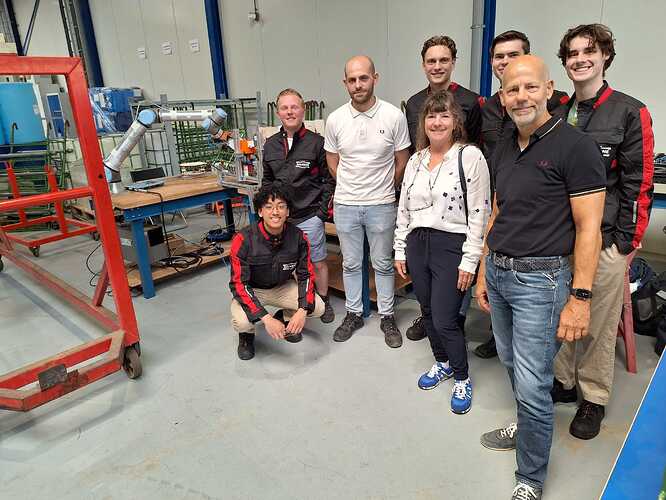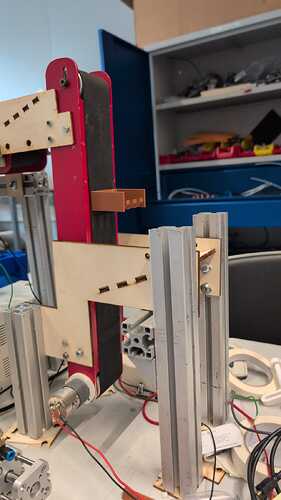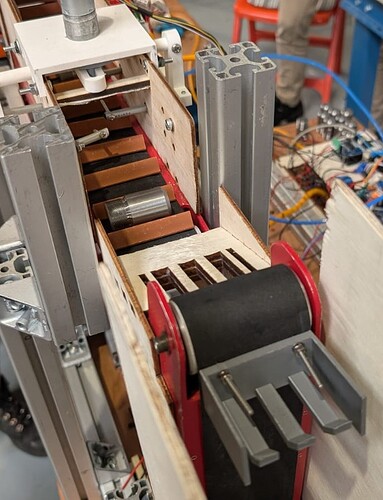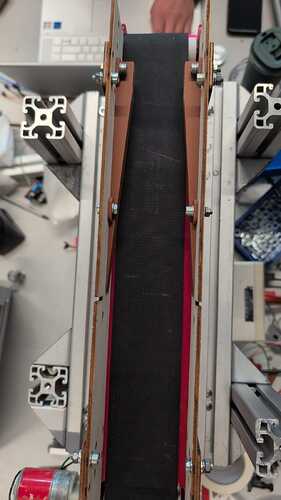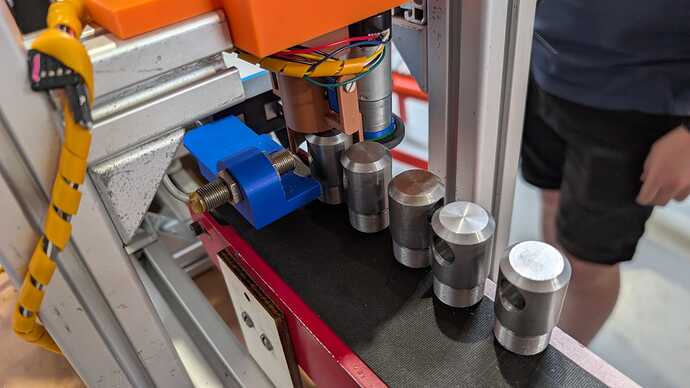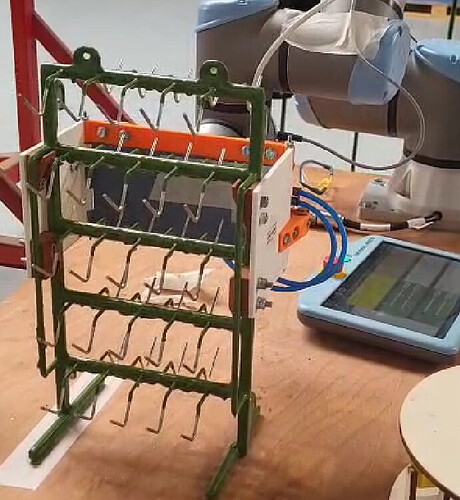youtube video
project team
Kevin Buch | Bram Leinberger | Naman Kayastha | Youri Beugelsdijk | Ilmar Nan
Press release:
24-6-2025
GALVAMÉ ANNOUNCES THE AUTOMATED PISTON ROD RACKING MACHINE TO ENABLE PISTON ROD MANUFACTURERS TO GALVONIZE THEIR PISTON RODS QUICKER.
Introduction
The automated piston rod racking system is a proof of concept designed to orient piston rods, load them into racks, and place these racks onto a trolley.
The system offers a more sustainable and precise method for racking and galvanizing piston rods.
This ensures that more piston rods can be galvanized per trolley, making the process more cost-efficient and improving overall service quality.
Problem paragraph
Manually racking piston rods is labor-intensive and repetitive.
This machine allows that manpower to be reallocated to more valuable tasks.
Manual racking also carries the risk of human error such as missing piston rods, but with robotic assistance this issue is eliminated.
In addition, the system provides a more cost-effective method for racking piston rods.
Solution paragraph
To use the machine, the employee only needs to load it with piston rods.
From there, the machine automatically fills the racks while the employee is free to focus on other tasks.
Compared to manual labor, the machine makes fewer mistakes when racking.
It achieves this by using a variety of sensors to orient and space the piston rods evenly before picking them up with the rack.
Finally, the machine can operate independently for extended periods of time, reducing labor costs and increasing efficiency.
How the product works
At the beginning of the process, an employee has to load a large quantity of piston rods and racks into specified areas of the machine. When the machine is turned on, there is a scoop attached to a moving belt that scoops up piston rods one by one.
These piston rods are then placed onto a secondary moving belt with slots in it. The slots on the secondary moving belt ensure that the piston rods can only lie down in a certain orientation and are further singled out. The piston rods then arrive at a station that causes them to fall onto their sides by pushing the tops of the piston rods at high speed. This ensures that all of the piston rods are now lying on their sides.
After this, the piston rods are placed exactly in the middle of the belt and then fall into a funnel. The funnel takes advantage of the fact that the piston rods are always heavier on one side than the other, causing them to consistently fall in the same direction into the funnel.
The piston rod will fall onto a third moving belt and get squeezed by a gripper. A wheel starts spinning the piston rod until an induction sensor detects the hole in the piston rod and releases the gripper. The piston rods are then placed in rows of five to be picked up.
A rack is now picked up using a gripper at the end of a UR10 robot. The robot picks up all of the rows of piston rods on one side of the rack, after which the rack is placed on a turntable and rotated. The robot then picks up all of the rows of piston rods on the other side of the rack and hangs the rack on a trolley.
FAQ
- How would you increase the productivity of the machine?
The speed of the machine can be improved by having two piston rod orienters next to one another while having one robot arm pick the piston rods from the belts with a higher speed.
- What editions can be made to the machine?
The current biggest edition would be a vibrating feeder for the piston rods going into the machine. This will make sure that the piston rods have a smaller chance to get stuck in the feeder of the machine.
- Does the machine require any safety restrictions?
The machine does require the employees who are working in close contact with the machine to wear safety glasses and stay out of restricted areas around the machine.

